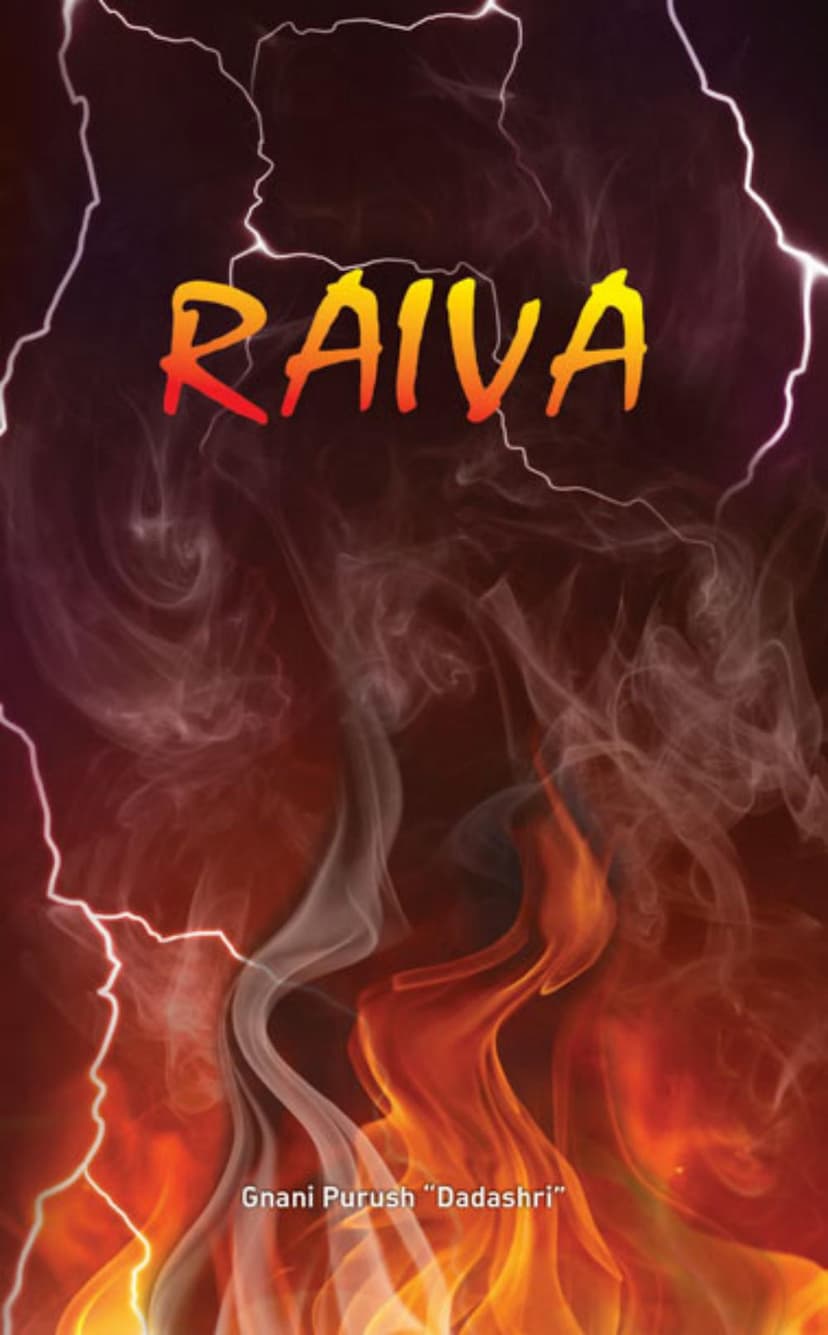Anger
Added to library: September 1, 2025

Summary
Here's a comprehensive summary of the Jain text "Anger" by Dada Bhagwan, based on the provided pages:
Core Message: Anger is a Weakness, not a Strength
The book "Anger" by Dada Bhagwan, presented by the Dada Bhagwan Aradhana Trust, is a discourse on the nature of anger from a spiritual perspective, offering a path to overcome it through self-realization and the Akram Vignan path. The central thesis is that anger is a profound weakness, not a sign of strength or a necessary response in any situation.
Understanding Anger:
- Causes of Anger: Anger arises when things don't go our way, when we are misunderstood, when our views clash with others, when we are accused of being wrong (especially when we believe we are right), when we are insulted, suffer a loss, or when our pride or greed is threatened.
- Illusion of Control: We often believe we are right and the other person is wrong. This is an illusion, as everyone operates from their own perspective. Anger stems from the ego's inability to accept this reality.
- Emotional vs. Spiritual Strength: True strength lies not in reacting with anger, but in remaining unaffected, calm, and forgiving. Evasiveness and arguments are seen as weaknesses, while calmly enduring an insult signifies great inner strength.
- The Animalistic Nature of Anger: When a person succumbs to anger, they are likened to an animal or a beast. Anger is described as setting oneself and others on fire, a destructive force that burns everything around it, including future potential.
The Nature of Anger as a Weakness:
- Not a Necessary Tool: The idea that anger is necessary in certain situations is a worldly notion born from an inability to manage it. True strength comes from possessing "sheel" (extraordinary moral character), which can subdue even wild animals and enemies.
- Ego as the Root Cause: Anger is fundamentally rooted in the ego. When the ego is wounded, anger erupts. The ego's desire for "my way" and its attachment to perceptions fuel this.
- Internal vs. External Damage: While the external effects of anger might be visible (like arguments), the internal destruction is far greater and often unseen, consuming inner peace and potential.
- The Cycle of Vengeance: Anger creates a link of vengeance, leading to suffering in future lives. It perpetuates a cycle of conflict and prevents spiritual progress.
The Akram Vignan Solution:
The book introduces Akram Vignan, a direct, step-less path to Self-Realization established by Gnani Purush "Dadashri." This path offers a way to dismantle the root causes of anger and other inner weaknesses.
- Understanding the "Knower": The core of the solution lies in realizing the "knower," the true Self, which is separate from the ego and its weaknesses like anger. Until this "knower" is recognized, anger will persist.
- True Knowledge vs. Intellectual Understanding: Knowing that anger is wrong intellectually is not enough. True knowledge, acquired through a living Gnani, eradicates the cause of anger, not just the result.
- Changing the Cause, Not the Effect: People often try to suppress anger (the result), which is futile. The solution is to address the underlying causes, such as faulty perceptions and the ego's attachment to opinions.
- The Role of "Nimits": When someone causes anger, they are merely "nimits" (determining factors or instruments) bringing forth the effects of one's past karma. Just as a stone rolling down a hill doesn't provoke anger because there's no one to blame, understanding others as nimits helps dissolve anger.
- Pratikraman (Self-Correction and Asking for Forgiveness): A crucial practice taught is pratikraman, which involves acknowledging one's mistake, feeling remorse, and internally asking for forgiveness from the "Soul within" the other person. This is a powerful tool for dissolving the karmic bonds of anger.
- Non-Violence (Ahimsa) and Emotional Control: Anger is considered violence because it destroys millions of lives within. True non-violence extends to controlling one's emotions.
- The Power of "Sheel": The book contrasts the weakness of anger with the immense strength of "sheel" (moral character). A person with "sheel" commands respect and can influence others without resorting to anger.
- Nourishing Kashayas (Anger, Pride, Attachment, Greed): These inner weaknesses thrive on being "fed" by our opinions, justifications, and the ego's need for validation. To overcome them, one must stop feeding them.
- Karma and Intention: The book distinguishes between gross karma (sthool) and subtle karma (sookshma). While gross actions like anger have immediate consequences, it is the subtle intention (bhaav) that binds future karma. A firm resolve to not be angry, even if anger occurs, prevents it from binding future karma.
Specific Nuances and Examples:
- Parental Anger: While generally condemning anger, the text acknowledges that when parents or gurus become angry with their children or disciples without the intention to harm, and for their ultimate well-being, it can result in "punya" (positive karma). This is a complex aspect, highlighting the subtle distinctions in spiritual science.
- Differentiating Anger and Annoyance: Anger is linked to the ego, while simple annoyance, especially from a parent towards a child for their well-being, may not be considered negative karma.
- Internal vs. External "Taanto" (Lingering Resentment): Anger isn't just outward expression; it includes internal burning and resentment. True liberation comes from dissolving both.
The Path to Liberation:
The book emphasizes that true liberation from anger and other weaknesses comes through acquiring "true knowledge" from a Gnani Purush. This knowledge, transmitted through processes like the Gnan Vidhi, leads to Self-Realization and the dissolution of the ego, which is the root of all such inner flaws. The ultimate goal is to become free from these "kashayas" and realize the pure Self, leading to a state of bliss and peace.